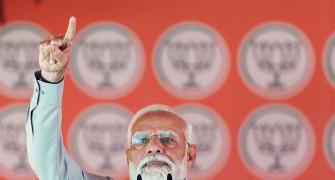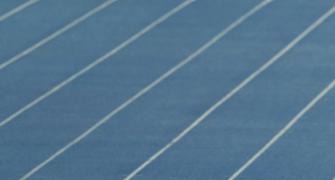The really disturbing numbers relate to inequality. Bihar's per capita income is a third of India's, and a fourth of Gujarat's, notes T N Ninan.

Having read stories about how in 10 years Nitish Kumar has been able to record rapid economic growth and show developmental progress in Bihar, it is a bit of a shock to land in Patna and discover some harsh facts.
The state accounts for one per cent of the total bank credit given out in India; that's only marginally more than the credit that banks give in Chandigarh, which has all of one million people (Bihar in 2011 had 104 million).
The state accounts for nearly nine per cent of the all-India population, but just one per cent of car sales. Its power demand is half of Delhi's.
What do young people do in the state? Basically, they try to get away. In the absence of local engineering and technical colleges, they head for Delhi and the southern states - by one count, the state remits Rs 5,000 crore annually as fees to educational establishments elsewhere.
As for those left behind, there is a massive rush for exam centres all over the country whenever there are examination boards for banking, railways, government service, army recruitment… anything that might provide an assured job.
By one assessment, 47 per cent of families in Bihar have a migrant working somewhere else, including in the lands of the Malayalis (that means Kerala and West Asia!).
The railways discourage such travel. Catching a train from Patna to Bengaluru gets you into a journey of 48 hours.
There are few trains that touch Patna Junction, and fewer flights at what is proudly pronounced as Jayaprakash Narayan International Airport.
Visit Patna railway station in the late evening and you can see patient crowds gathered on the platform, on the foot overbridge and on the steps going down to the platform, waiting to catch a train that is not due to leave till after midnight, more than four hours away.
You wonder what they think of a bullet train service from Ahmedabad to Mumbai as investment priority.
The stories about roads and bridges having been built are true, and the growth of highway kilometre numbers is impressive. Yet, one side of the only bridge across the Ganga has been under repair for years.
Traffic on the half of the bridge that is still open moves first in one direction, then the other. On a bad day, it can take you 16 to 18 hours to get to the other side.
The state has shown good economic growth over the past decade because of improved local tax collection, better use of government funds and bigger Central fiscal transfers.
The good news may last a while longer because of the generosity of the last Finance Commission. But the state's share of industrial employment is half of one per cent.
The last decade has not seen a single new power station come up (virtually all the power that is consumed comes from other states), nor a single large industrial facility.
The state has 29 sugar mills, including many government-owned ones; only seven function - all of them private. A good bit of consumption spending must be getting financed by remittances.
Land prices in Patna are unreal, and the malls in the commercial heart of the city are all owned by politicians.
The really disturbing numbers relate to inequality. Bihar's per capita income is a third of India's, and a fourth of Gujarat's.
Some districts in the state have per capita income that is a third of Bihar's average.
If the numbers are right, a district like Siwan, said to be agriculturally prosperous, has per capita income that is barely a tenth of the national average, low as it is.
Siwan also has 1,700 people per square km - more than four times national population density, and 35 times global density.
So why isn't there more combustion? Perhaps people believe the elections will change things. You believe that, don't you?










